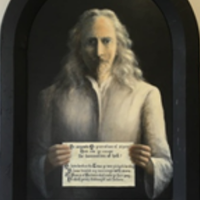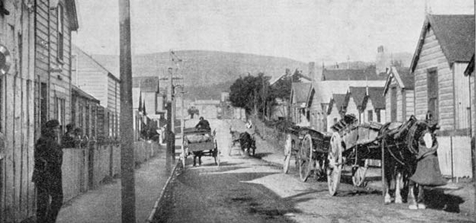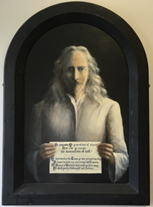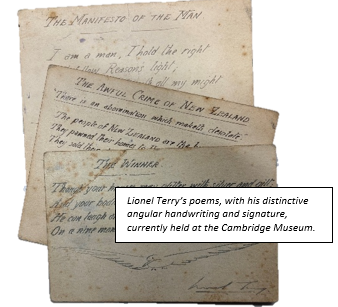
The Tragedy of Joe Kum Yung
-
In 1905, the murder of Joe Kum Yung in Wellington’s Haining Street exposed an underlying racism in New Zealand.
Joe Kum Yung was born in Poonyu County, Canton in 1837. He arrived in New Zealand in around 1880 after spending about four years in Victoria, Australia. A mining accident left him permanently injured, and he was unable to continue working. Whilst recovering in Grey Hospital, the local Chinese community there raised funds for him to return to China, but he chose instead to travel to Wellington where he was living on the streets.
The Chinese Quarter, Haining Street, Wellington, New Zealand Mail 17/8/1904
His killer, Lionel Terry, was a well-educated 32-year-old British man on a crusade to halt Asian immigration here. He walked from Northland to Wellington to personally petition Members of Parliament, but his racist demands were rejected. He then went to Haining Street, the Chinese quarter in Te Aro, and shot Joe Kum Yung from behind. Terry returned to his hotel, had dinner, and turned himself in to authorities the next day. He was found guilty of murder and eventually sentenced to life imprisonment in psychiatric institutions where he died, a diagnosed paranoid schizophrenic, in 1952 aged 79.
The Chinese community was devastated by the killing and dismayed by the sympathy shown to Terry by the jury, media and sections of the public.
Self-portrait of Joe Kum Yung’s killer Lionel Terry held at Healthcare Otago Charitable Trust
Lionel Terry was initially given the death sentence. In searching for an explanation for his state of mind, police contacted his family in England who provided a grandmother, aunt and uncle with mental illness. His acquaintances overseas were interviewed, referring to his peculiar way of dressing – “knee breeches and socks, leaving his calves exposed”. These seem to have been part of the basis for which Lionel Terry was pronounced insane by a Government Minister. His sentence was reduced to life imprisonment in psychiatric institutions.
He began his sentence at Sunnyside Mental Hospital in Christchurch before being transferred to Seacliff Mental Asylum in Dunedin. He made several attempts to escape – sometimes successfully. He promised not to escape again if his prison conditions eased. He was permitted to write and paint. He kept pet goats and sheep and gardened.
In 1940, he assaulted a doctor and was kept in solitary confinement until his death. His racist views never wavered.
The case has not been forgotten. It has featured in the news at least four times this decade: in 2005 a memorial plaque for Joe Kum Yung was unveiled in Haining Street; protest arose in 2020 when one of Lionel Terry’s poems featured in an NCEA exam; Terry’s journal surfaced at a home in Christchurch in 2022; and in 2024 a song was released lamenting Joe Kum Yung’s death. Seven of Terry’s poems recently sold for $220 at auction.
It was with some surprise that we discovered among some uncatalogued archives, four handwritten poems on plain cards, signed by Lionel Terry. They are undoubtedly genuine and very disturbing. We have chosen not to print his works in full here, but let’s just say his xenophobia, misogyny and messianic delusions are chillingly conveyed.
We will never know for sure how these items ended up in a family collection in the Cambridge Museum. One member of the family trained as a nurse in Christchurch in the early 1910s so perhaps she came across Lionel Terry during her time there.
Since the National Library already holds some of Lionel Terry’s writings, we intend to recommend these newly discovered pieces be added to the national collection where they can be studied in context and with appropriate care.
References: Clio Francis, Dominion Post, 23/3/2011; Fandom.com, Healthcare Otago Charitable Trust eHive; Teara.govt.nz
This article was written by Karen Payne for the August 2025 edition of the Cambridge Historical Society newsletter.



